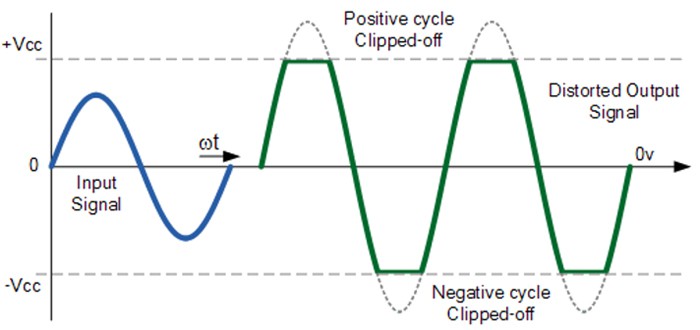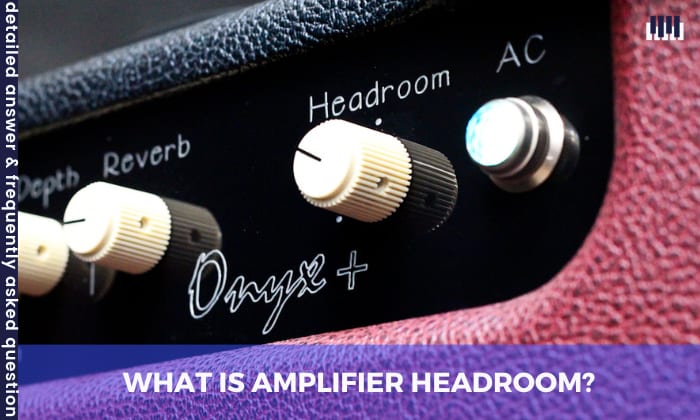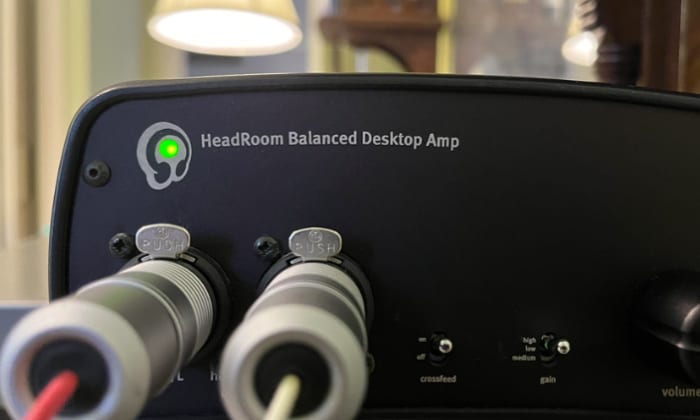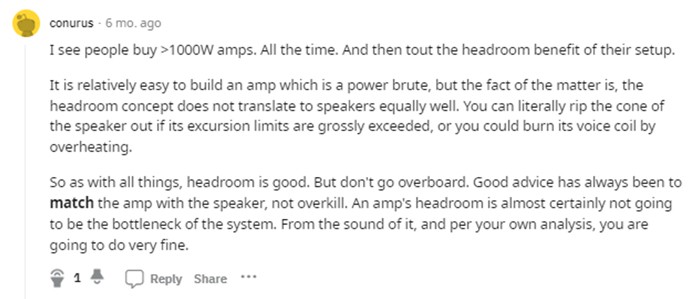Have you ever asked yourself, “What is amplifier headroom?” If yes, then you’ve dialed into the right frequency! Welcome to our post, where we simplify this complex audio technology lingo.
Amplifier headroom is one of the most significant yet underrated concepts in music. What if I told you that this principle is the secret to the powerful, undistorted sound you enjoy at concerts or through your high-end stereo?
That’s right! Headroom gets its drum roll moment for ensuring your favorite tunes are played with unbeatable clarity. Stay tuned as we hit the high notes of amplifier headroom together.
Table of Contents
What Is Headroom in an Amp?
1. Definition
Did you know that amplifier (amp) headroom is the unsung hero of the audio world? It’s vital for clean sound in very dynamic or loud passages in music.
Simply put, an amplifier can momentarily deliver power above its rated capacity. This feature is called amp headroom or clean headroom.
Meanwhile, headroom refers to the disparity between the normal operating level of an amplifier and the maximum level it can handle before distortion sets in.
2. Importance of amplifier headroom
The primary reason headroom is so important is that it’s essential for preventing distortion (or clipping). We concede with the statement of u/redditfromwork on Reddit:
When you have enormous headroom levels, you enjoy high-fidelity sound. It assures the precise reproduction of every sonic detail, from the softest whisper to the most dramatic crescendo.
Additionally, headroom in audio optimizes speaker performance and lifespan. An amplifier with high headroom gives your speakers the power they require during demanding passages. Also, it protects your speakers from potential damage.
3. Headroom’s Correlation With Wattage, Input, and Voicing
Generally, these factors are closely connected to headroom. Depending on these elements, each amplifier has distinct headroom levels.
- Wattage defines how much power an amplifier can produce. As the wattage increases, so does the amplifier’s headroom. This permits it to tolerate peak audio signals without clipping or distorting.
- Now, the input refers to the signal that is fed into the amplifier. This signal’s voltage influences the amplifier’s output and, thereby, its headroom.
A high input voltage can lead to a stronger output. However, there is a risk of pushing the amplifier to its limits. Inadequate headroom can quickly become a culprit for distortion in your sound system.
Examine the diagram below:

- Meanwhile, voicing is often used in the context of musical instruments, like a guitar amp. Some amplifiers are already voiced to provide more overdrive or clean headroom.
Moreover, you can employ lower-gain preamp components or decrease the amount of plate voltage on the power section to achieve extra headroom.
Factors to Consider With Amp Selection
When shopping for amplifiers, we recommend considering the following factors:
- Power ratings: The amplifier should have a better power rating, preferably 1.5 to 2 times higher than the speakers, to produce enough headroom. Based on our experience, a 75 to 100W amp is best for a 50W speaker.
In other words, you shouldn’t pick an amplifier that is too powerful for your speaker, as is agreed by u/conurus on Reddit:
- Dynamics of the audio source: Consider the dynamics of the music you listen to. For instance, if you enjoy classical or live jazz, you’ll need high headroom amps. Pop or rock music, meanwhile, usually has fewer dynamic variations.
- Room size and preferred volume levels: A larger space or higher volume levels require more power, thus bigger headroom, to fill the space with sound and avoid distortion.
- Impedance matching: For optimal power transfer and gear safety, your speaker’s impedance should match the recommended speaker impedance of your amplifier. Impedance usually ranges from 4 to 8 ohms.
Conclusion
Understanding “What is amplifier headroom?” is crucial for any ardent music enthusiast. It’s the defining factor that shapes audio quality, preventing distortion and ensuring clarity even during sudden bursts of high-level audio signals.
The more the headroom, the less likely the amplifier will push to its limits and produce distorted sound. We suggest weighing the above factors against your requirements to enjoy the best music experience.

Sam Stephenson is a writer who grew up in Washington, North Carolina. He was 2010 and 2015 ASCAP Deems Taylor / Virgil Thomson Prize winner and a 2019-2020 Guggenheim Fellow in General Nonfiction. His books have been published by W.W. Norton, Alfred A. Knopf, and Farrar, Straus and Giroux


